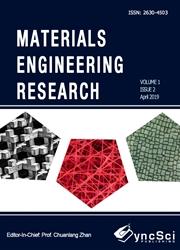A study on the deformation and crushing of copper tubing: experiments, theory & FE modelling
引用次数: 2
Abstract
A series of 250 mm lengths of copper tubing, of 15 mm outer diameter and 0.7 mm wall thickness, were studied to determine their deformation if they were pinched or crushed between rigid objects applying a given force, to replicate potential accidental damage suffered by the copper pipes during service. A finite element modelling framework was developed to simulate the crushing of a copper pipe the same dimensions as that used for experiments, and the experimental data allowed for a validation of the pipe crushing at approximately room temperature, to consider copper pipe carrying cold water. The FE modelling activity was then extended to consider the deformation of copper pipe at 80∘C, carrying heated water at this temperature. The modelling agreed reasonably well with experiment, and applied forces of 1.5 kN began to deform the cold pipe, with the pipe collapsing on itself at loads of 6 kN. The heated pipe began to deform at roughly 1.25 kN. Lastly, theoretical flow calculations were performed to determine the Reynolds value, the flow velocity and the pressure loss and head loss per unit length of the deformed pipes, according to classical pipe flow calculation methods.铜管的变形与破碎研究:实验、理论与有限元模拟
研究了一系列250 mm长、外径为15 mm、壁厚为0.7 mm的铜管,以确定它们在施加给定力的刚性物体之间被挤压或压碎时的变形,从而复制铜管在使用过程中遭受的潜在意外损坏。开发了一个有限元建模框架来模拟与实验尺寸相同的铜管的压碎,实验数据允许在近似室温下验证管道压碎,以考虑铜管输送冷水。然后,将有限元建模活动扩展到考虑铜管在80°C下的变形,在该温度下输送热水。模型与实验吻合得相当好,施加的1.5 kN的力开始使冷管变形,在6 kN的载荷下,管会自行塌陷。加热管在大约1.25 kN时开始变形。最后,进行理论流量计算,以确定变形管的雷诺值、流速、单位长度的压力损失和水头损失,根据经典的管道流量计算方法。
本文章由计算机程序翻译,如有差异,请以英文原文为准。
求助全文
约1分钟内获得全文
求助全文

 求助内容:
求助内容: 应助结果提醒方式:
应助结果提醒方式:


